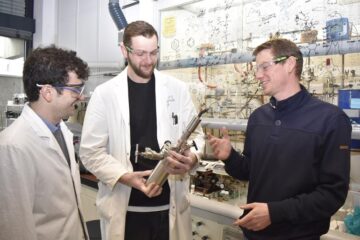Animal food allergens unmasked

In theory all proteins have the potential to become allergens, but the study found that in practice the ability of animal food proteins to act as allergens depends on their evolutionary distance from a human equivalent.
“This explains why people who are allergic to cow’s milk can often tolerate mare’s milk but not goat’s milk”, said Dr Clare Mills of the Institute of Food Research. “Proteins in horse milk are up to 66% identical to human milk proteins, while known allergens from cows and goats are all less than 53% identical to corresponding human proteins.
“Overall we found that only an animal food protein that is less than 54% identical to a human equivalent could become allergenic”.
Cow’s milk and hen’s eggs are common causes of allergy in infants, while the most common animal food allergens in adults are fish and seafood.
For the first time the researchers found that the majority of animal food allergens could be classified into one of three protein families. Tropomyosins, proteins found in muscle tissue, are the most important family.
“Tropomyosins in mammals, fish and birds are at least 90% identical to at least one human tropomyosin and none have been reported to be allergenic. In contrast, the allergenic tropomyosins are all from invertebrates such as insects, crustaceans and nematodes and at most are only 55% identical to the closest human homologue”, said Dr Heimo Breiteneder of the Medical University of Vienna.
EF-hand proteins form the second largest animal food allergen family. Those in birds and mammals are not allergenic, while those in frogs and fish can cause allergy. The third animal food allergen family, caseins, are all mammalian proteins from milk. The researchers analysed milk from rabbits, rats and camels as well as sheep, goats, cows and horses.
In previous analyses of plant food allergens published in 2005, the scientists found that most belong to a highly restricted number of protein superfamilies. The research will make it easier to identify new allergens and help explain how they trigger an immune response.
“Animal food proteins lie at the limits of the capability of the human immune system to discriminate between foreign and self proteins”, said Dr Mills. “Immune responses to some animal food allergens such as the invertebrate tropomyosins, run close to becoming a form of autoimmune response and this needs to be considered when developing allergy therapies”.
Media Contact
More Information:
http://www.bbsrc.ac.ukAll latest news from the category: Life Sciences and Chemistry
Articles and reports from the Life Sciences and chemistry area deal with applied and basic research into modern biology, chemistry and human medicine.
Valuable information can be found on a range of life sciences fields including bacteriology, biochemistry, bionics, bioinformatics, biophysics, biotechnology, genetics, geobotany, human biology, marine biology, microbiology, molecular biology, cellular biology, zoology, bioinorganic chemistry, microchemistry and environmental chemistry.
Newest articles

Lower dose of mpox vaccine is safe
… and generates six-week antibody response equivalent to standard regimen. Study highlights need for defined markers of mpox immunity to inform public health use. A dose-sparing intradermal mpox vaccination regimen…

Efficient, sustainable and cost-effective hybrid energy storage system for modern power grids
EU project HyFlow: Over three years of research, the consortium of the EU project HyFlow has successfully developed a highly efficient, sustainable, and cost-effective hybrid energy storage system (HESS) that…

Safer alternative for an explosive reaction
The chemical industry has been using a reaction with explosive chemicals for over 100 years – now Mülheim scientists have discovered a safer alternative. The Ritter Group of the Max…





















